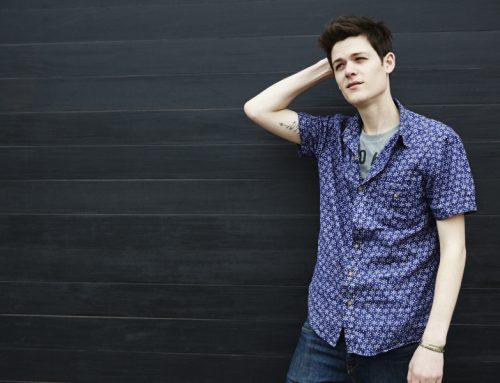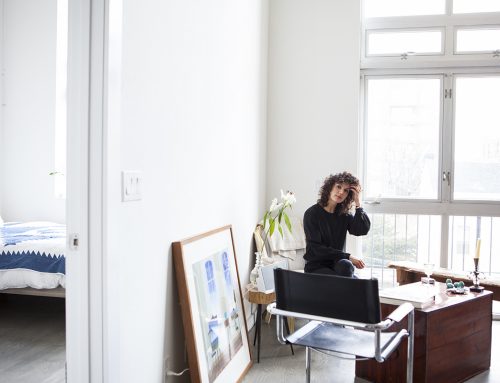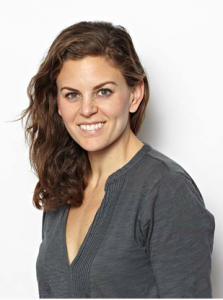Aaron recently won a VMA for Best Visual Effects on the OK Go music video The Writing’s On the Wall, which he co-directed with Bob Partington and Damian Kulashhas. It has over 10 million views on You Tube. His Chrome Speed Tests web film for Google won 7 Cannes Lions for 1stAveMachine.
Q&A with Aaron Duffy:
Tell me a little bit about yourself, who you are, and where you are from.
My name is Aaron Duffy. Each part of my name has 5 letters and within each part is a repeated letter – bearing zero significance. I grew up in Cos Cob, CT. I went to college in St. Louis. Now I live in Brooklyn. I have a turtle named Chevy. He has lived with me for 21 years. I also love to crochet.
Please tell me what you do, your style of work, and explain what your job entails.
In a word, what I get to do is baller. But I have not found a concise or clever way to sum up “artist, director, thinker, maker”, so I usually claim all of those things. At the core of it all is communication. As a director and creative director at 1stAveMachine, I pitch new or experimental ways to visualize and communicate a script or marketing idea. As co-founder and ECD of SpecialGuest, I am building and leading a creative agency to think up and create communications for companies and brands.
But that is all very wordy and formal. I am like all of the people I work with. We yearn to be creative and impress people with new ideas. We are addicted to it and I, for one, would say that working in advertising feeds that addiction very well, often resulting is some really fun productions and baller ads.
I try not to be too conscious of “style”, though inevitably a style emerges from a body of work. I heard an interview with the writer David Means in which he said, “Style is a maneuver around what you can’t do”. For the most part, I think he is right. There are so many opportunities to create new and unexpected things. I hate to think I am missing those opportunities because I’m adhering to my “style”. I feel lucky to have worked on so many different kinds of projects with so many amazing and varied collaborators. I am grateful for not being pigeon holed.
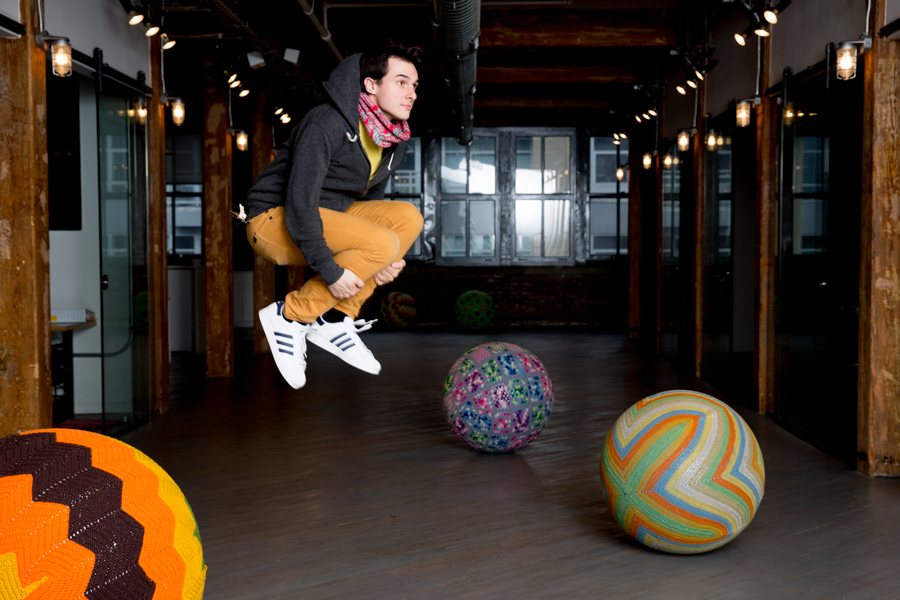
What other creative things are you working on?
I’ve been directing for the past 8 years and in that time, my life as an artist has not felt distinct from my “job”. Any creative pursuit outside of work usually finds its way into a work project and many of the ideas generated from my work makes its way into my every day life.
However, crocheting has played a strange and important role for me. I learned how to do it while taking long train rides through Italy while I studied abroad. I think I was attracted to the monotonous and repetitive action. It’s soothing. It’s also exciting to build a volume out of a single line. I started making hats when I graduated from college to make a bit of money. One day, on the subway, the creative director at Lion Brand Yarns saw me crocheting and gave me her card. I started freelance crocheting for Lion Brand while interning at an animation and design company in Brooklyn. A couple months later, I had a lot of hat orders to fill but I was also expected at a superbowl party. So I took all my yarn with me to the party and sat under a table to finish the hats. A girl looked under the table to figure out what I was doing and we exchanged emails. A week later she had shown my crochet and animation work to her boss, the founder of 1stAveMachine (which had been a company for about a year at the time and was comprised of Serge Patzak and Arvind Palep). A couple weeks after that I started as a director at 1stAve. Thanks to Claire Mitchell and crocheting for that.
Today, I don’t get to crochet as often as I’d like. But I still make hats for special people. If I have a hobby outside of my work, crocheting would have to be the one.
What has been your career path?
While my career path has felt like a cascade of fortunate transitions, in reality, it is due to the care and consideration of people who have believed in me. I was not a particularly strong student. For example, I was a very slow reader. I would try to make up for that with drawings and visual context clues. I was very stubborn about the way I wanted to do things in the art room and I was fortunate that I was encouraged rather than scolded for doing things my way. My parents let me build what ever I wanted, including nailing into the trees in the back yard and killing the grass with cumbersome wooden clubhouse constructions. Starting in middle school, I had a metal band with my two best friends, including bombastic drumming, raging guitars and screaming (from me). I never heard anything other than encouragement from my parents. I went to a highschool where, at the time, students were far more likely to get into college for sports than for arts. But my art teacher pushed me towards an art school anyway and helped me build a portfolio to get in. Throughout college I found myself being rewarded for being disruptive. For example, solidifying my hands and feet in cement blocks for two days and hiring assassins to stab me in the middle of critique (a fake stabbing but we made it look very convincing). Even when I had a full schedule, my video professor convinced me take his classes four semesters in a row, making it seem like my life depended on it (and in the end it probably did). One of the most important moments was a visit from a student who had graduated from my major three years earlier. She happened to be in town for a wedding, but agreed to look at my work. She told me about studios in New York that make money by doing animation for commercials and my mind exploded. I honestly never knew the industry even existed. She helped me get an internship at a studio called Lifelong Friendship Society and from there, I met Serge Patzak and Arvind Palep at 1stAveMachine. They believed in me enough to make me their first director when I was 22 and not much to show for other than school work. And not long after that, they have believed in me enough to be my partner in business.
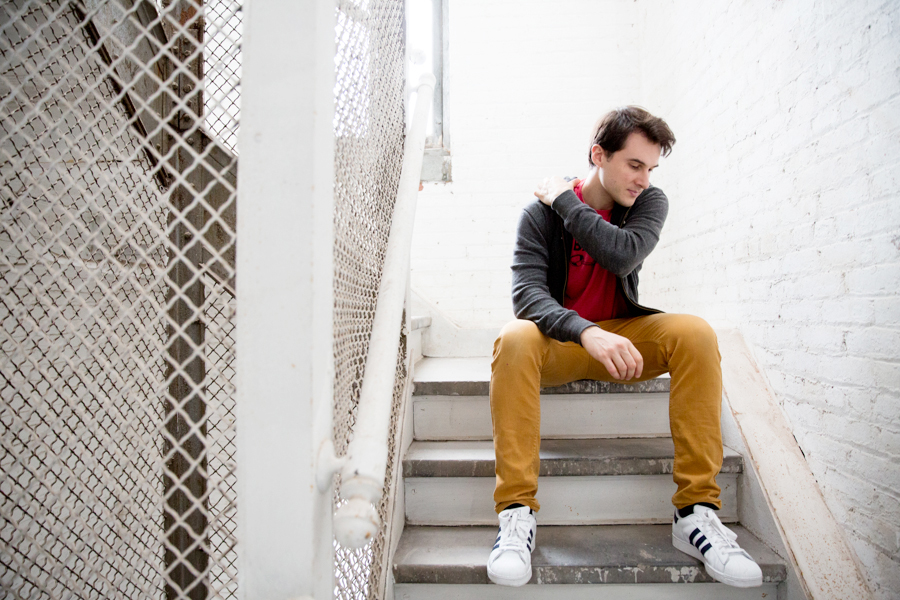
How did you figure out what you wanted to do? Did you have aha moment?
When I was studying abroad in Florence, it was the spring semester before my Junior year at Washington University in St. Louis. That means that I had to choose a major before leaving Italy. I felt drawn to the sculpture major because everything that I made involved something performance based or volumetric and usually the product of those projects was video documentation. However, a year earlier I had sat in on the Visual Communications thesis presentations in the main auditorium and while most of them were pretty boring, one of them was totally out of left field. The student had created some kind of random montage of film and animation and somehow sequenced it into a compelling story. Perhaps I was less intrigued by the work itself and more excited that he was being so disruptive and entertaining within (what I thought was) a stuffy discipline.
So I felt completely split. To figure it out, I kept returning to a famous renaissance church called Santa Croce. I would go there whenever I could because it was filled with frescos by Geotto di Bondone. Over time, I realized I was drawn to the frescos because they were like giant comic book frames about the life of St. Francis and they depicted one of the biggest superhero characters of that time. Jesus. I’m not religious. But even I could stand in awe in front of a fresco of Jesus, flying in the air, on the cross, with two pairs of flapping red wings, shooting golden laser beams down on St. Francis and scaring him for life with the stigmata. It’s an epic, Iron Man style moment. But even more important than the fresco was why the fresco was painted there. Giotto was commissioned to paint it there to attract people to the church from all over the world. I was attracted to it. I felt something. People have been feeling something from being in that church for centuries. How could I be like Giotto?
I decided to go with the Visual Communications major. In a way, I’m still a Visual Communications major today.
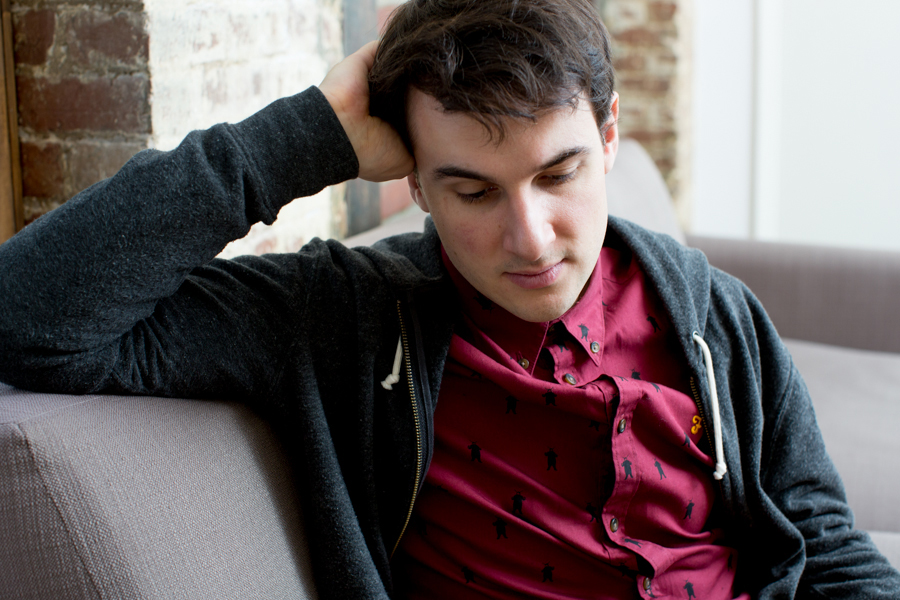
How did you learn to do what you do?
Every project is its own learning experience for what I do. I’m still learning just as much as I did with my first directing project. No production is the same as the one before it. As unglamorous as it might be, one of the best learning experiences I can point to is my time as a waiter.
I waited tables for two summers, first at a fancy restaurant on Martha’s Vineyard and second at a family style restaurant in Greenwich, Connecticut. I’m not sure if there is a better way to learn about client services than to be a server. Working for tips means you get paid for your charm and your endurance. Mistakes happen and you have to figure out how to over come them in short time. You learn about how little patience the client has. You learn what it means to go beyond their expectations. You learn when to be present and helpful as well as when to disappear and watch from afar. More than anything, I probably learned my own comfort zone for work. When I had 5 or 6 tables running at once, I made it work like a dream. When I only had one table running, I would drop the ball a bit or “over serve”. Certainly, I don’t recommend waiting tables too long, but I do recommend the experience.
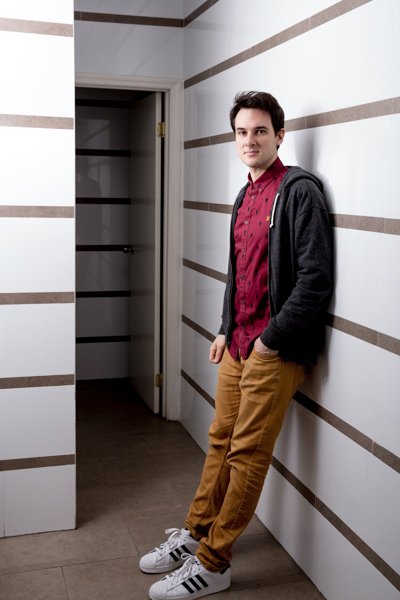
What is one of your favorite projects you’ve worked on?
In 2009 I was asked to pitch some ideas for the launch of the Google Chrome browser for the UK market. The browser was not widely adopted at that time. I presented a series single shot, sculptural constructions based on the 8 different benefits of the browser. Once approved by the agency and by Google, an incredible team came together. This was the first production I would do with Bob Partington (who is now my co-director on many projects), Will Rexer (who is now the DP on most of my projects), and Sam Penfield, (who has been the EP on all of my projects and now my partner in the business). Certainly, I love the way the 8 Google films turned out. But it has to be my favorite project because of the Captain-Planet-style converging of people that occurred. That changed my life.
Optical illusions play a huge role the OK Go music video that you directed, The Writing’s on the Wall. When did you become interested in optical illusions?
I think optical illusions are fascinating on a basic human level. You don’t need to love optical illusions to be surprised by them. In a way, they teach the viewer a truth about their own eyes and about how their brain receives the world. I became interested in using optical illusions in my work because I felt the viewer was yearning for something tangible when they were watching a commercial. As a rule, I feel it’s impossible for a brand to ask a viewer to believe their message if there is nothing believable about what the viewer is looking at. At the same time, you need to surprise the viewer. Optical illusions fit comfortably between surprise and truth. Certainly, it is not always the right direction, but it is convenient and fun to make.
The same goes for a music video like Writings On the Wall. We were tasked with creating a video for a band that never stops surprising their viewers. At the same time, they are a band that always gives the viewer exactly what is in front of the camera. Illusions. Slam.
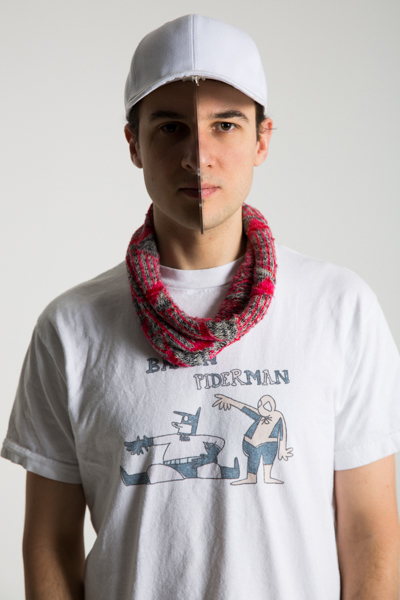
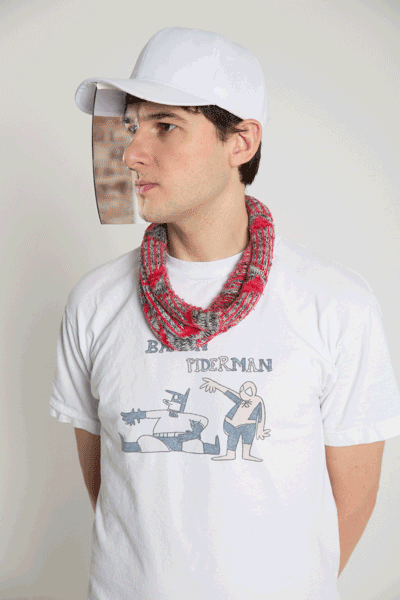
Aaron showing his double sided mirror, a visual effect that was used in the OK Go music video The Writing’s On the Wall.
What was the process of conceptualizing and then executing this complex video that has been seen by millions?
Writings on the Wall was brutally difficult and brutally fun to make. Damian, Bob and I (co-directors) worked for a month on concept development. We gathered all of our favorite illusions and then started sequencing them with the song. We rehashed the sequence over and over again until we felt we had a strong timeline and then we had to jump into production. We had a month to pull it off in a giant industrial warehouse in Bedstuy, Brooklyn. Damian was an amazing co-director and the band were incredible collaborators. Bob pulled off ingenious rigging devices to get the camera from one place to another. Our production designer, Ethan Tobman, hero’d the building and painting with us till all hours of the morning with a fantastic crew of pros and volunteers. Will Rexer made the camera and lighting shine with nearly no resources. And our producers, Cheri and Garrett somehow kept us on schedule and in the price range. It’s impossible to name all the heroes on a project this immense, but I’m very proud of the film and everyone who worked on it.
Anything unexpected about the work you do? Maybe something you didn’t know before you started on this path.
One of the amazing things about working in advertising is that you are invited into places and conversations that you would otherwise be completely excluded. This invitation extends across all industries. For example, I have walked inside a semiconductor manufacturing fab. There are people who work for that semiconductor company that are not allowed to go in the fab, mostly because even the smallest speck of dust can contaminate the entire factory. But I needed to be there to learn about it and film it. Almost every project has something unexpected attached to it like that.
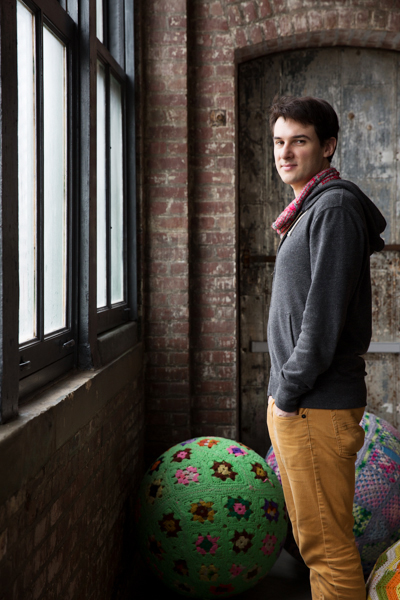
Who and what inspires you?
One of my early inspiration points was the work of Michel Gondry. His work gave me license to create things that were not so slick and perfect. With the first animation I ever made I tried to mimic one of Gondry’s music videos by stop-motion animating some orange juice cartons. Gondry’s work also had a sense of evolution and revolutions that made me feel like I could evolve my own work over time as well.
I also draw a lot of inspiration from science and unexpected occurrences in the natural world. I’ve never been taken in by fantasy. I’m more fascinated by real things if they are shocking enough.
Please describe how your creative brain works. Do you have any routines or rituals that help you get the creative juices flowing?
I think I’ve always been a quietly competitive person. I hate to say it, but if there’s anything that gets my brain going, it’s a healthy dose of competition. There’s always a way to do something better. It might not be the only way to “get the creative juices flowing”, but it’s a nice booster.
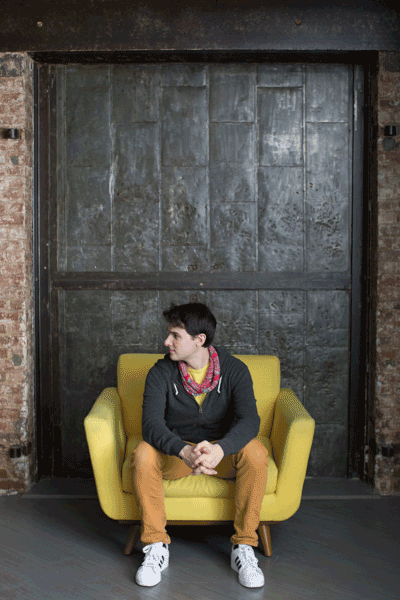
How do you define success?
There are so many ways that we gauge the success of our work; ROI, bench marks, message retention, etc. But I know that something I’ve made is successful if I immediately want to send it to my friends and family. That means I’m proud of it and I want it to represent me to the people I care about.
Any advice for someone interested in following in your chosen path and learning to do what you do?
Be persistent. Be audacious. Be lucky.
The last part is probably the hardest to pull off but I can’t deny it. I’m lucky to have such amazing people around me.
To learn more about Aaron Duffy and his work, please check out:
1staveMachine.com
specialguest.tv
aaronduffy.com


